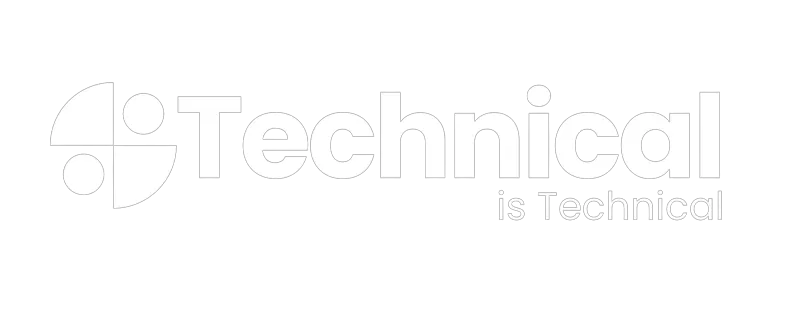In the dynamic realm of web development, where the pursuit of optimal performance is ceaseless, the fusion of React and WebAssembly (Wasm) emerges as a transformative collaboration. This integration not only promises enhanced performance but also heralds a paradigm shift in how developers approach computationally intensive tasks. In this expansive exploration, we embark on a journey into the symbiotic relationship between React and WebAssembly, uncovering the myriad ways high-performance modules can elevate the capabilities of web applications.
Demystifying WebAssembly: A Brief Prelude


WebAssembly, often denoted as Wasm, stands as a binary instruction format designed to be a portable compilation target for high-level programming languages such as C, C++, and Rust. Departing from the conventional text-based execution of JavaScript, WebAssembly introduces a low-level binary format that allows for efficient execution, pushing the boundaries of speed and performance in web applications.
WebAssembly provides a unique value proposition by enabling code execution at near-native speed directly in the browser. This technology revolutionizes the possibilities for performance-intensive tasks, offering a level of efficiency previously unattainable with traditional web languages.
The Ascendancy of React in Web Development
React, the brainchild of Facebook, has solidified its standing as a cornerstone in modern web development. Renowned for its component-based architecture, virtual DOM, and declarative syntax, React provides an efficient and scalable foundation for building user interfaces. However, even with its prowess, there are instances where React applications may grapple with performance bottlenecks, especially in scenarios demanding complex computations or dealing with voluminous datasets.
The integration of React with WebAssembly emerges as a strategic response to these challenges. By harnessing the strengths of both technologies, developers gain the ability to leverage the efficiency of WebAssembly for specific tasks, seamlessly integrating high-performance modules into their React applications.
To ensure optimal performance and navigate potential challenges, it becomes imperative to hire a React developer well-versed in harnessing the synergies between React and WebAssembly, thereby unlocking the full potential of this powerful combination in modern web development.
The Profound Advantages of React and WebAssembly Integration
1. Near-Native Performance
The foremost advantage lies in WebAssembly’s execution speed, approaching that of native machine code. Integrating WebAssembly modules into React applications empowers developers to offload performance-critical tasks to code that runs at near-native speed. This substantial boost contributes significantly to enhancing the overall responsiveness of the application, providing users with a seamless and satisfying experience.
2. Reusability of Existing Codebases
WebAssembly brings with it the ability to reuse existing codebases written in languages like C, C++, or Rust. This is particularly advantageous for projects with established, performance-optimized code. Developers can compile such code to WebAssembly, seamlessly integrating it into their React applications and preserving the benefits of legacy code.
3. Efficient Parallel Processing
WebAssembly introduces efficient parallel processing by allowing multiple threads to execute simultaneously. In contrast to JavaScript’s single-threaded environment, WebAssembly’s parallelism can be harnessed to optimize tasks that can be divided into independent subtasks. This proves especially beneficial for scenarios involving data processing or complex computations.
4. Reduced Load Times
WebAssembly modules are designed for fast loading, contributing to reduced application load times. This is particularly advantageous for applications that necessitate rapid initialization or boast extensive codebases. The efficiency of WebAssembly plays a pivotal role in minimizing the time it takes for the application to become fully functional.
Practical Implementation: Seamlessly Integrating WebAssembly into React
1. Setup and Configuration
Integrating WebAssembly with React begins with the use of tools such as Emscripten or Rust to compile high-performance code into WebAssembly modules. Once compiled, these modules can be effortlessly imported into React components.
2. Creating React Components
Developers can encapsulate the integration of WebAssembly within React components. These components can then leverage the imported WebAssembly modules to handle specific tasks, such as image processing, mathematical computations, or data manipulation.


3. Handling Interactions
React components can seamlessly interact with WebAssembly modules through JavaScript functions. This interaction facilitates a smooth communication bridge between React’s declarative nature and the imperative execution of WebAssembly code.
Challenges and Considerations in the Realm of React and WebAssembly
While the integration of React and WebAssembly presents a plethora of advantages, developers should remain cognizant of certain challenges:
1. Learning Curve
Engaging with WebAssembly may introduce a learning curve, particularly for developers unaccustomed to low-level languages like C or Rust. However, the potential for enhanced performance often justifies the initial investment in learning.
2. Browser Compatibility
Although major browsers support WebAssembly, developers should be mindful of browser compatibility when implementing this technology. Ensuring graceful degradation or fallbacks for browsers that do not support WebAssembly is crucial for maintaining a consistent user experience across various platforms.
3. Debugging and Tooling
Debugging WebAssembly code can prove more challenging compared to JavaScript. Developers are encouraged to leverage available tools and conduct thorough testing to identify and address potential issues effectively.
Conclusion: A Pinnacle of Performance Unveiled
The integration of React and WebAssembly signifies a pinnacle in web development, transcending the traditional boundaries of performance. By selectively incorporating high-performance modules written in languages such as C or Rust, React applications gain the ability to handle computationally intensive tasks with unprecedented speed and efficiency.
As web applications evolve, demanding richer features and more complex functionalities, the partnership between React and WebAssembly emerges as a compelling solution. Whether dealing with real-time data processing, complex calculations, or resource-intensive simulations, the amalgamation of React and WebAssembly opens up a realm of possibilities for developers aiming to deliver performant and responsive user experiences.
In conclusion, as the web development landscape advances, the collaboration between React and WebAssembly stands as a testament to the industry’s commitment to pushing the boundaries of what is achievable. To unlock the full potential of this partnership, developers are encouraged to delve into the integration of high-performance modules, harnessing the unique advantages offered by WebAssembly. In this era of performance-driven development, the combination of React and WebAssembly emerges as a dynamic force, paving the way for the future of web development—a future characterized by unprecedented speed, efficiency, and a transformative user experience.
Author’s Bio: Max Mitchell
Max Mitchell is a seasoned technical writer with a passion for translating complex concepts into accessible and engaging content. With a background in computer science and a keen interest in emerging technologies, Max brings a wealth of knowledge to his writing. His articles, tutorials, and documentation reflect his commitment to making technical information understandable for both novice learners and seasoned professionals. Max’s writing not only explores the intricacies of cutting-edge technologies but also emphasizes the practical applications that empower developers and enthusiasts in their journey of continuous learning.
































